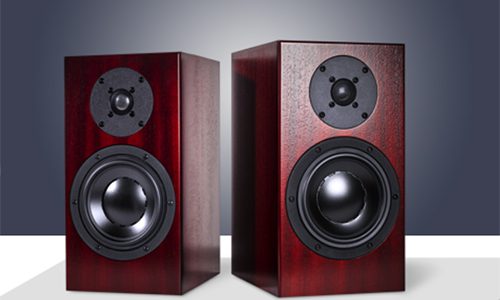In Part One of the Millennial Challenge, CE Pro’s panel of Millennials were shown random pictures of several loudspeakers. While their responses were brutally honest at times, the Millennials’ comments on the speakers’ designs and whether they would like these products in their homes shed some light on what manufacturers should be paying attention to in the near future.
Analyzing their anecdotal responses, it is clear that audiophile products did not resonate with our trio of Millennials: Andrew Nichols, Jessie Steinberg and Adam Forziati.
The Millennials’ comments did reveal a few points that manufacturers should consider:
Size Matters
Size does matter. Maybe not in the way that most people would think, however. The trio’s comments stated that due to a number of factors that affect their lives, smaller bookshelf speakers were the preferred type or style of product Millennials would be more likely to purchase.
Their reasoning for preferring smaller speakers include the fact that they are living in smaller spaces and the frequency for Millennials to be more transient in their living situations due to career changes.
Speaker Finishes and Colors Are Important
The other major point that came up is colors and speaker finishes.
CE Pro’s three-person panel emphasized that natural wood finishes and colors such as gloss black, matte black and gloss white all provide the necessary finish choices that complement their home designs.
Interestingly, they all pointed out their preference for more traditional loudspeakers with updated designs, rather than the radical designs that often come with audiophile products.
Reading into Nichols, Steinberg and Forziati’s comments, a case could be made that audiophiles are designing products in a vacuum. Stating this more simply: Audiophiles are designing products to appeal to other audiophiles and are not designing products that appeal to broader consumer demographics.
The question that arises from this observation is—are these companies consulting with outside industrial designers, and professionals such as architects and interior designers during the development phase of their products?
Given the cost of these products, are these companies really thinking about the long-term sustainability of their businesses or are they simply going for the highest profit margins as the audiophile market continues to shrink?
A Few Words of Advice From Millennials
Digging into their comments, CE Pro asked Nichols, Steinberg and Forziati some follow up questions to flesh out what they are looking for from the consumer electronics industry.
Steinberg recommends to manufacturers that they think carefully about the messages they are delivering to younger consumers in order to better connect to the Millennial and Gen Z demographics.
Speaking directly to the size of speakers, Nichols notes that he would rather have several smaller speakers in a room, versus a pair of large speakers, for example. According to Nichols, having speakers that are small provide more versatility to users to move speakers around, which better cater to the demands of their daily activities.
Nichols went on to say that he is willing to save up the money to make a bigger audio system purchase, but it’s up to the industry to prove why it is worth the investment to spend a larger sum of money on a system.
Forziati runs with Nichols’ comments and says that if Millennials can reinvigorate the vinyl market, then speaker companies should give younger consumers the same opportunity with loudspeakers.
“[Steinberg] had mentioned before about how our generation—have kind of brought records and turntables back from the brink a little bit and I definitely agree with that analysis. I think that anybody that is intending to market loudspeakers to our generation and goes after us needs to keep in mind what we did for turntables,” Forziati emphasizes.
“I think that for me, the reason why I own records, why I why I own a turntable is because I heard the quality difference between from what I listen to on basic ear pods while I’m at work or while I’m in the car—I don’t really listen to ear pods in the car—but that kind of thing, versus listening to something making it an experience and sitting down and enjoying the quality that turntables offer,” says Forziati.
Read Next: It’s Time to Develop a New Generation of Audio Consumers
“If you can, as Andrew [Nichols] kind of hinted at, demonstrate why owning loudspeakers to begin with will the give buyers something different, an experience, something that is particularly high quality for the price, that’s a selling point.”
In addition to giving younger consumers legitimate reasons to purchase speakers by demonstrating products, Forziati says that manufacturers need to understand the number of ways Millennials and Gen Z use audio products.
His advice is to incorporate features into speaker products that support the various applications in which younger listeners will use loudspeakers.







